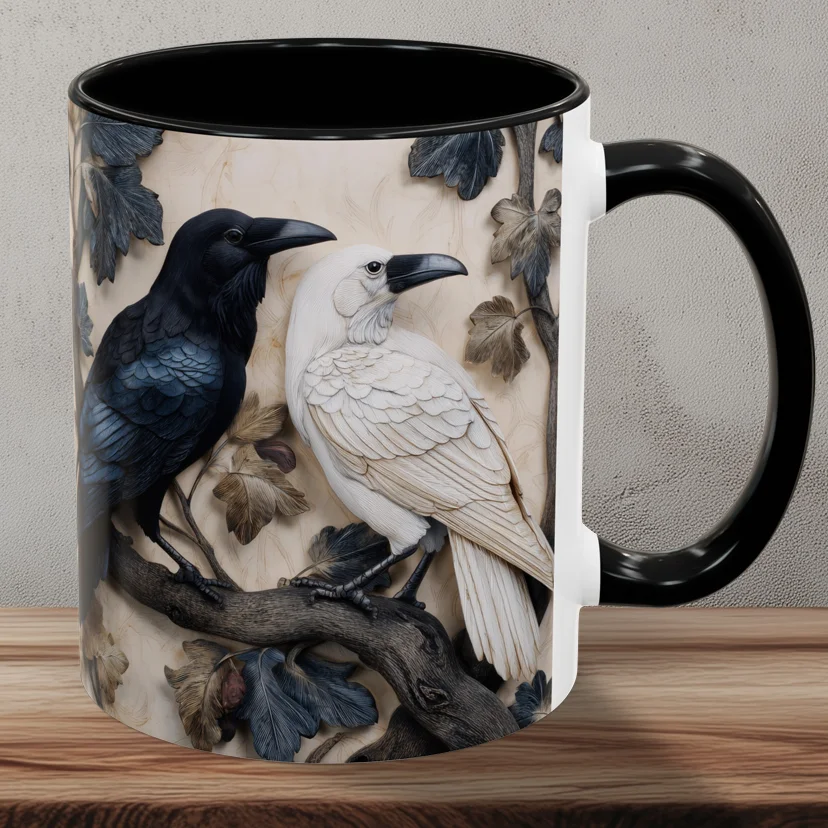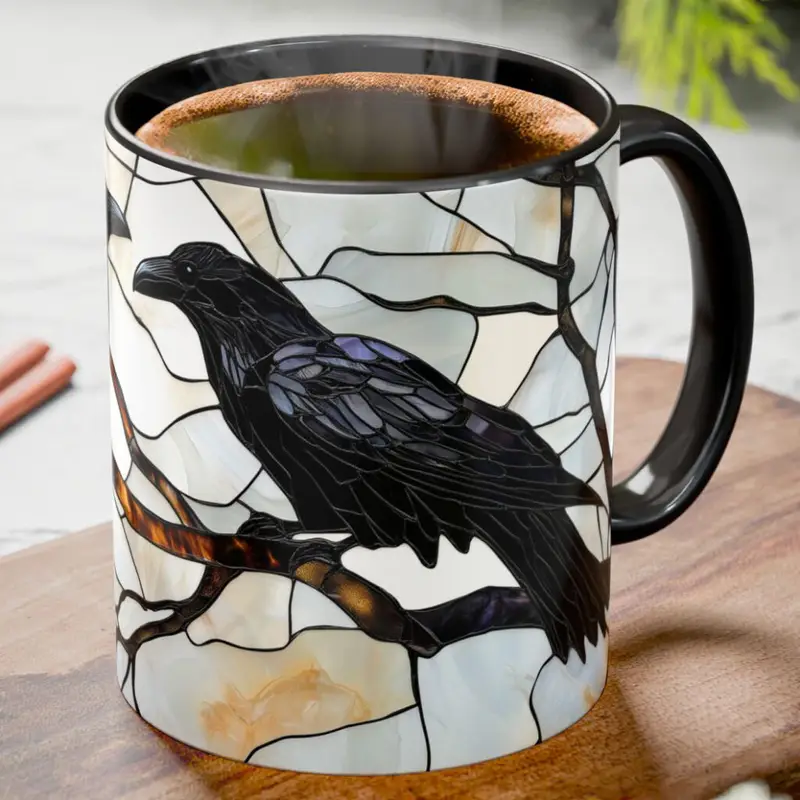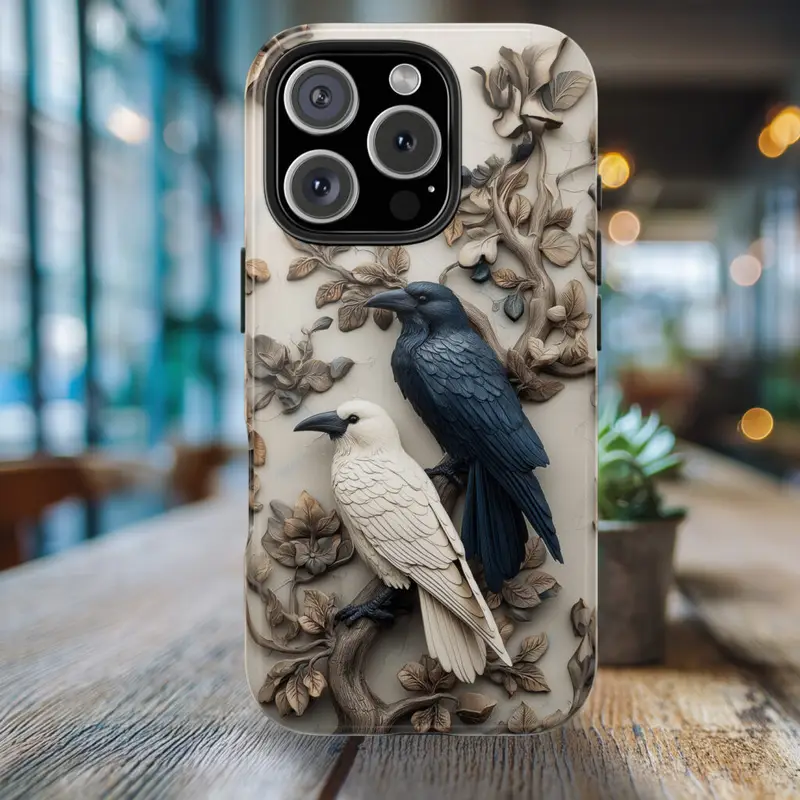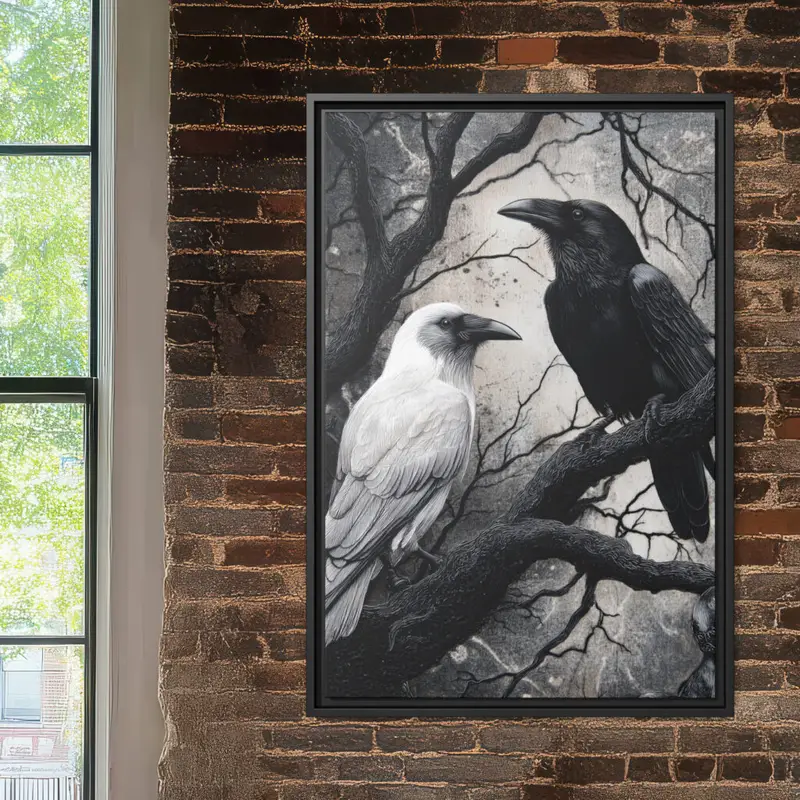The Symbolism of Ravens in Mythology and Culture
Ravens have long captivated the human imagination. With their glossy black feathers, haunting calls, and sharp intelligence, these mysterious birds have appeared in legends, religions, and literary works across cultures and centuries. From omens of death to messengers of divine wisdom, the raven’s symbolic power is as vast and complex as the myths that surround it.
At RavenLibrary.com, we celebrate the mystique of ravens through art, home decor, and storytelling. In this article, we’ll explore the deep symbolism of ravens in global mythology, spiritual traditions, and modern culture and why this iconic bird continues to inspire awe.
Ravens in Norse Mythology: Odin’s All-Seeing Messengers
Perhaps the most famous mythological ravens are Huginn (“thought”) and Muninn (“memory”), who belonged to the Norse god Odin.
According to legend:
-
Each day, Huginn and Muninn flew across the world (Midgard) gathering information.
-
They returned to Odin and whispered all they had seen and heard.
-
Odin relied on them for knowledge and insight, making them symbols of intellect, foresight, and the spiritual mind.
Symbolic meaning in Norse culture:
-
Wisdom and higher knowledge
-
The duality of thought and memory
-
Connection between gods and humans
To this day, ravens are deeply associated with divination, prophecy, and mystery in Norse inspired literature and fantasy.
The Raven as an Omen of Death in European Folklore
In many Western cultures, especially in medieval Europe, ravens were often seen as harbingers of death. Their black feathers, scavenging habits, and presence on battlefields contributed to their reputation as bringers of doom.
Common beliefs:
-
Seeing a raven meant bad luck or a death in the family.
-
Ravens were believed to guide souls to the afterlife.
-
In Christian symbolism, they sometimes represented sin or the devil.
But not all was grim, some traditions saw ravens as guardians of the dead or as birds that watched over souls during transition.
Celtic and Druidic Lore: The Raven as a Warrior Spirit
In Celtic mythology, the raven was a sacred symbol of battle, magic, and feminine power. It was closely associated with the war goddess Morrígan, who could shapeshift into a raven.
Morrígan’s Raven Form:
-
Appeared before and after battle to foretell outcomes.
-
Flew over the slain, representing both death and rebirth.
-
Served as a symbol of fate, forewarning warriors of what was to come.
In this context, ravens symbolize:
-
Transformation through conflict
-
Prophetic insight
-
Powerful feminine archetypes
Ravens in Native American Mythology: The Trickster and Creator
Across many Native American tribes, the raven is not just wise but playful, mischievous, and world-shaping.
In Pacific Northwest tribes (Tlingit, Haida, Tsimshian):
-
Raven is a creator god who brought light to the world.
-
He is a trickster figure, stealing fire, shaping landscapes, and teaching lessons through mischief.
Symbolic meanings include:
-
Creation and transformation
-
The balance of chaos and wisdom
-
Dual nature: both helper and deceiver
These stories highlight the raven’s role as a shapeshifter and liminal being crossing boundaries between light and dark, order and disorder.
The Raven in Literature and Gothic Culture
No discussion of raven symbolism is complete without Edgar Allan Poe’s famous poem “The Raven.”
“And the Raven, never flitting, still is sitting, still is sitting
On the pallid bust of Pallas just above my chamber door…”
Poe’s raven represents:
-
Grief and lingering sorrow
-
Loss and remembrance
-
The finality of death (“Nevermore”)
In gothic literature, ravens often act as omens, observers, or metaphysical messengers an aesthetic and symbolic staple.
Today, in dark academia and gothic culture, the raven is used as a motif for:
-
Melancholy beauty
-
Intellectual depth
-
Mystery and poetic isolation
It’s no wonder the raven remains a favorite in tattoos, wall art, and moody decor including the pieces found at RavenLibrary.com.
Biblical and Religious Symbolism
Even in religious texts, the raven plays complex roles:
In the Bible:
-
The raven is the first bird Noah sends from the ark after the flood.
-
In the Book of Kings, ravens are sent by God to feed the prophet Elijah.
Here, ravens symbolize:
-
Survival in hardship
-
Divine provision
-
Loneliness paired with faith
Despite its dark appearance, the raven often serves as a faithful servant of divine will.
Modern Interpretations: From Totems to Tattoos
In today’s world, ravens have evolved into powerful personal symbols. They’re embraced by:
-
Spiritual seekers (as spirit guides or animal totems)
-
Gothic artists and designers
-
Nature lovers and birdwatchers
Modern symbolism includes:
-
Wisdom and intuition
-
Rebirth through shadow
-
Respect for the mysterious and unseen
Whether you’re drawn to ravens for their literary drama, mythological power, or natural intelligence, they remain one of the most symbolically rich birds in existence.
Final Thoughts
The raven is more than just a bird, it’s a symbol that crosses cultures, continents, and centuries. Whether as a guide in Norse myth, a trickster in Native legends, or a mourning companion in gothic literature, the raven remains a powerful archetype of intelligence, transformation, and mystery.
At RavenLibrary.com, we honor the enduring symbolism of ravens through curated collections of wall art, phone cases, and home decor that speak to the darker, deeper side of beauty.
Black & Albino White Raven Crow Coffee Mug
Price range: $19.95 through $22.95Stained Glass Raven Crow Coffee Mug
Price range: $19.95 through $22.95Gothic Raven Phone Case 3D Style Crow
$27.99Black and Albino White Ravens Phone Case
$27.99Black and Albino White Raven Wall Art
Price range: $12.95 through $109.95





